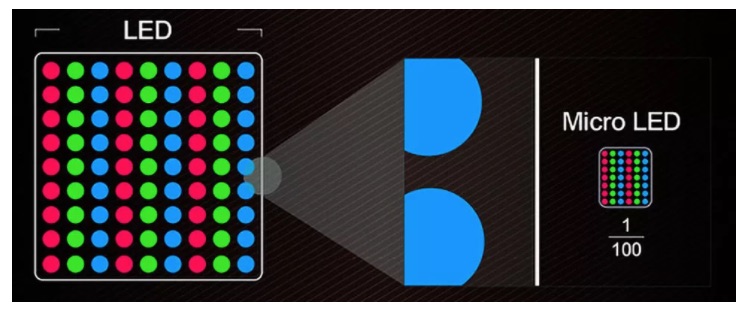
Apple is reportedly weighing up a $330 million investment in a Taiwanese factory to manufacture both LED and MicroLED displays for future iPhones, iPads, MacBooks, and other devices. According to Taiwan Sourcing Service Provider (CENS), Apple is teaming up on the new factory with LED producer Epistar and LCD panel maker AU Optronics.

The report highlights the advantages of Mini-LED and MicroLED screens over LCD and OLED displays, including being thinner and more energy efficient. For example, the power consumption of MicroLED screens is only one-tenth that of LCD displays, and the color saturation is close to OLED.Apple is teaming up on the new factory with Epistar, Taiwan's top LED producer, and Taiwanese LCD panel maker, AU Optronics. The plant will be located in the Longtan branch of the Hsinchu Science Park and Apple's total investment is estimated at NT$10 billion (US$334 million).
The new plant would be an expansion of Apple's operations in the area, and the company has reportedly sent a development team to Taiwan to work on the project. Apple has long been expected to use of Mini-LED and Micro LED across a range of products, including at times the 2020 Apple Watch, and now a future refresh of the 16-inch MacBook Pro.
According to the report, owing to the difficulties involved in developing MicroLED technology, early designs will rely on Mini-LEDs that are somewhere in between traditional LED and MicroLED technology. However, Apple still considers MicroLED technology to be the "top priority."Like OLED, micro-LED is self-luminous. However, compared with OLED, micro-LED can support a higher brightness, higher dynamic range, and wider color gamut, all the while achieving a faster update rate, wider viewing angle, and lower power consumption, all qualities favored by Apple.
Apple has six mini-LED products in the works that are set to debut in 2020 and 2021, according to Apple analyst Ming-Chi Kuo. Apple is said to be debuting the technology in a high-end 12.9-inch iPad Pro, which will launch in the fall, a 27-inch iMac Pro, a 14.1-inch MacBook Pro, a 16-inch MacBook Pro, a 10.2.-inch iPad, and a 7.9-inch iPad mini.
Kuo has not mentioned launch dates for the other devices with the exception of the iMac Pro, which Kuo expects to launch in the fourth quarter of 2020, and the 7.9-inch iPad mini, which he says will launch in 2020.
Apple has also reportedly been testing prototype Apple Watch models with MicroLED displays since 2017. While rumors have suggested an Apple Watch with a microLED display could launch as early as 2020, Twitter leaker @L0vetodream on Sunday poured cold water on that prediction by claiming that this year's Apple Watch Series 6 will use the same OLED display as previous models.
Article Link: Report: Apple Investing $330 Million in Taiwanese Factory Where MicroLED Display Development Will Be 'Top Priority'
Last edited:

